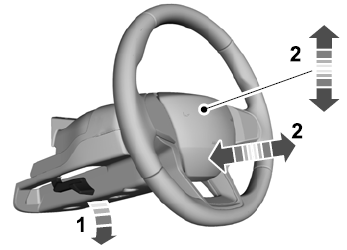Lincoln Aviator: Towing / Trailer Sway Control (If Equipped)
WARNING: Turning off trailer sway control increases the risk of loss of vehicle control, serious injury or death. Ford does not recommend disabling this feature except in situations where speed reduction may be detrimental (such as hill climbing), the driver has significant trailer towing experience, and can control trailer sway and maintain safe operation.
Note: This feature does not prevent trailer sway, but reduces it when it begins.
Note: This feature cannot stop all trailers from swaying.
Note: In some cases, if your vehicle speed is too high, the system may turn on multiple times, gradually reducing your vehicle speed.
The system applies the brakes to the individual wheels and reduces engine torque to aid vehicle stability. If the trailer begins to sway, the stability control warning lamp flashes and a message appears in the information display. Slow your vehicle down, pull safely to the side of the road and check for correct load distribution.
You can switch this feature off in the information display. When you switch the ignition on, the system automatically turns on.
 Towing a Trailer
Towing a Trailer
WARNING: Towing trailers
beyond the maximum recommended
gross trailer weight exceeds the limit
of your vehicle and could result in
engine damage, transmission damage,
structural damage, loss of vehicle
control, vehicle rollover and personal
injury...
 Recommended Towing Weights
Recommended Towing Weights
Note: Do not exceed the trailer weight
for your vehicle configuration listed in
the chart below.
Note: Be sure to take into consideration
trailer frontal area...
Other information:
Lincoln Aviator 2020-2025 Service Manual: General Procedures - Factory Mode Deactivation
Deactivation NOTE: During vehicle build, some modules, such as the IPC and BCM module are set in factory mode. Factory mode reduces the drain on the battery during longer periods where the vehicle is not used. While in the factory mode, various systems may be altered or disabled and the IPC displays FACTORY MODE CONTACT DEALER in the message center...
Lincoln Aviator 2020-2025 Service Manual: Removal and Installation - Battery Current Sensor
Removal NOTE: Removal steps in this procedure may contain installation details. Position the rear compartment storage cover upward. Remove the rear compartment filler trim panel. Remove the rear compartment storage/cupholder assembly...
Categories
- Manuals Home
- Lincoln Aviator Owners Manual
- Lincoln Aviator Service Manual
- Drive Modes
- Body and Paint
- Keyless Entry
- New on site
- Most important about car
Adjusting the Steering Wheel - Vehicles With: Manual Adjustable Steering Column
WARNING: Do not adjust the steering wheel when your vehicle is moving.
Note: Make sure that you are sitting in the correct position.
Unlock the steering column. Adjust the steering wheel to the desired position.
